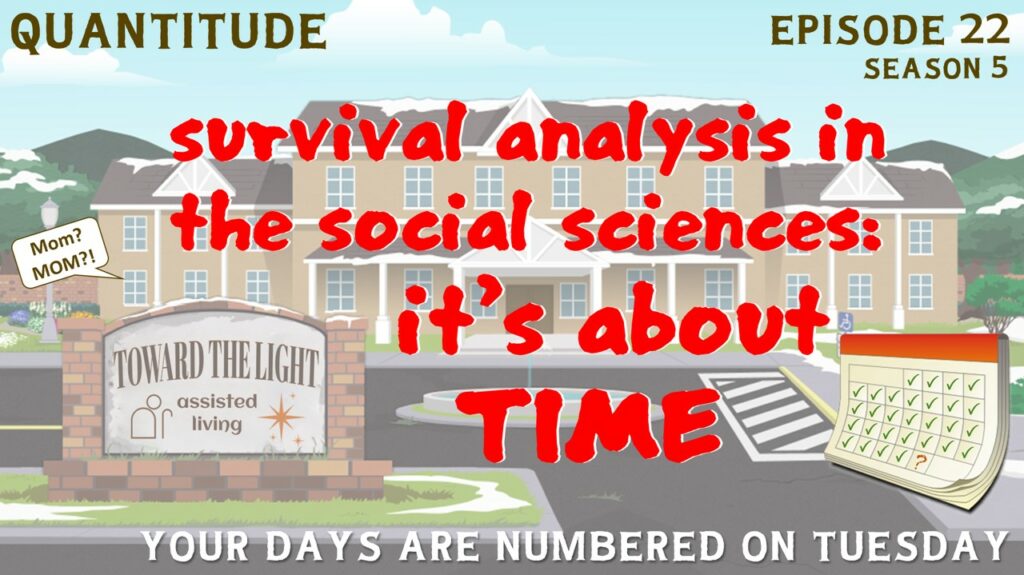In this week’s episode Greg and Patrick explore the incredibly cool topic of survival analysis, which is a set of techniques that allows for powerful tests of predictors of the amount of time to experiencing an event; yet these models are not often used in many areas of study. Along the way they also discuss the date of your death, running with scissors, Patrick’s Audi A8, because she’s dead, say my name, the good guys, things that annoy me, you tell me, using your brain, sofa forts, back dating checks, logistic regression on steroids, and coming to the party late. We hope you enjoy this week’s episode.
Related Episodes
- S3E17: Logistic Regression: 2 Legit 2 Quit
- S2E27: (re)Connecting With Discrete Data
- S2E26: MLM vs. SEM: Opportunities for Growth
Suggested Readings
Allison, P. D. (2010). Survival analysis using SAS: a practical guide. SAS Institute.
Allison, P. D. (2018). Event history and survival analysis. In The reviewer’s guide to quantitative methods in the social sciences (pp. 86-97). Routledge.
Efron, B. (1988). Logistic regression, survival analysis, and the Kaplan-Meier curve. Journal of the American Statistical Association, 83(402), 414-425.
Singer, J. D., & Willett, J. B. (1991). Modeling the days of our lives: using survival analysis when designing and analyzing longitudinal studies of duration and the timing of events. psychological Bulletin, 110(2), 268.
Singer, J. D., & Willett, J. B. (1993). It’s about time: Using discrete-time survival analysis to study duration and the timing of events. Journal of educational statistics, 18(2), 155-195.
Singer, J. D., & Willett, J. B. (2003). Applied longitudinal data analysis: Modeling change and event occurrence. Oxford university press.
Willett, J. B., & Singer, J. D. (1993). Investigating onset, cessation, relapse, and recovery: why you should, and how you can, use discrete-time survival analysis to examine event occurrence. Journal of consulting and clinical psychology, 61(6), 952.
Willett, J. B., & Singer, J. D. (1995). It’s déjà vu all over again: Using multiple-spell discrete-time survival analysis. Journal of Educational and Behavioral Statistics, 20(1), 41-67.

